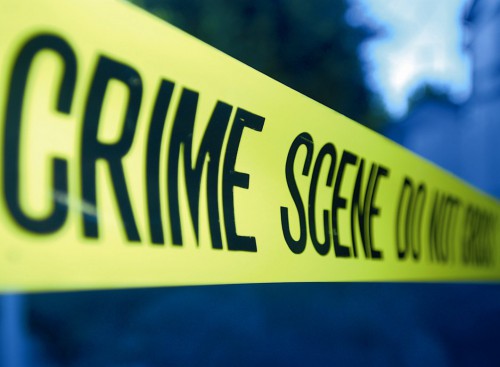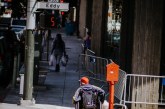
While there are some signs that increases in 2015 murder rates are reversing themselves, the Brennan Center yesterday published its final analysis of the 2015 crime rate.
Analysts Ames Grawert and James Cullen write, “Overall crime rates in America’s 30 largest cities were nearly identical from 2014 to 2015, according to an analysis of final 2015 numbers. Crime declined over that time period by 0.1 percent. The data show that crime rates remain at historic lows nationally, despite recent upticks in a handful of cities.”
The key findings are that, looking at the 30 largest cities (the methodology could be subject to some debate), they found that crime overall was about the same, declining by 0.1 percent. In two-thirds of the cities, the crime rates dropped but they were offset by a large increase in Los Angeles (12.7 percent). Nationally, they write, “Crime remains at all-time lows.”
During 2015, violent crime rose slightly by 3.1 percent. Again, three cities drove that change: “This result was primarily caused by increasing violence in Los Angeles (25.2 percent), Baltimore (19.2 percent), and Charlotte (15.9 percent). Notably, aggravated assaults in Los Angeles account for more than half of the national rise in violent crime.”
The murder rate rose by 13.3 percent in the 30 largest cities, with 19 cities seeing increases and 6 decreases. “However, in absolute terms, murder rates are so low that a small numerical increase can lead to a large percentage change.”
Moreover, much of this is driven by just three cities – Baltimore, Chicago, and Washington, which “account for more than half (244) of the national increase in murders.”
They write, “While this suggests cause for concern in some cities, murder rates vary widely from year to year, and there is little evidence of a national coming wave in violent crime. These serious increases seem to be localized, rather than part of a national pandemic, suggesting that community conditions remain the major factor.”
They found that “these three cities all seem to have falling populations, higher poverty rates, and higher unemployment than the national average. This implies that economic deterioration of these cities could be a contributor to murder increases.”
The picture in Los Angeles, for example, is complex. Last August, the LA Times reported that, after more than a decade of decline, “violent crime in Los Angeles rose more than 20% during the first half of 2015, with felony assaults up 26% and robberies up 19%.”
Digging beneath that, the Times noted that “most criminologists will tell you that crime goes up, crime goes down, and sometimes it’s a trend, or just a blip, apart from anything the police are doing. Others will point out that violent crime in cities like Los Angeles may have plunged so deeply in recent years — to historic modern lows — that it simply bottomed out.”
However, the most interesting finding in that article was: “Here in Los Angeles, the rise might also be attributable in part to the Los Angeles Police Department crime stats simply being reported more honestly. An irrefutable Los Angeles Times investigation of the department’s crime numbers for the first half of 2014, for example, discovered the misclassification of 1,200 violent felony assaults as misdemeanors, thus making it appear that serious violent crime was going down when in fact it went up by 14%.”
This year, the Times reported a month ago, “Killings in Los Angeles have surged by 27.5% so far in 2016 compared to the same period last year as the city continued to see a rise in violent crime.”
However, they reported that “property crime has fallen 2%, fueled largely by what Paysinger described as a ‘remarkable’ 16.2% drop in burglaries. As a result, overall crime is up less than a percentage point from 2015, Paysinger said.”
What is a trend, what are statistics, and what is noise? Hard to tell.
Meanwhile, the picture is different in Chicago. A week ago the Vanguard reported that Chicago faces an epidemic of gun violence and murder – murders are up 62 percent, shootings are up 78 percent.
However, the problems are being aided and abetted by an inappropriate response from the Chicago Police Department. The Chicago Police Accountability Task Force, with contributions from hundreds of people and released this month, notes: “There are too many neighborhoods in Chicago that are devastated by crime and abject poverty. In those areas, aside from a recommitment to investments in jobs, education and many other important community anchors, those residents need the protection of the police. However, CPD’s own data and other information strongly suggests that CPD’s response to the violence is not sufficiently imbued with Constitutional policing tactics and is also comparatively void of actual procedural and restorative justice in the day-to-day encounters between the police and citizens.”
The report concludes, “CPD’s own data gives validity to the widely held belief the police have no regard for the sanctity of life when it comes to people of color.”
They add, “Stopped without justification, verbally and physically abused, and in some instances arrested, and then detained without counsel—that is what we heard about over and over again.”
Similarly, Baltimore faces a crisis of policing that started with the death of Freddie Gray and might have resulted from a slowdown in policing.
Meanwhile, New York has seen huge drops in crime despite the end of stop and frisk and their own controversy with policing tactics.
The Times reported in late December 2015 that “fears that New York City was slipping back to a more dangerous time contrasted with reality. As reflected in the reported levels of the most serious types of crime, the city in 2015 was as safe as it had been in its modern history. A modest decrease in reported crime is expected by year’s end.”
Overall, as a recent Atlantic article noted, “By virtually any metric, Americans now live in one of the least violent times in the nation’s history.”
They note, “But the forces that drove the Great American Crime Decline remain a mystery. Theories abound among sociologists, economists, and political scientists about the causes, with some hypotheses stronger than others. But there’s no real consensus among scholars about what caused one of the largest social shifts in modern American history.”
—David M. Greenwald reporting






DG–Interesting and well-balanced post. I must confess that I was incorrect in my own personal guesses starting about a year ago that crime rates would generally go up because of a political crackdown on many police departments (all the way up to the DOJ in some cases); I’m also somewhat surprised by the results for “Stop and Frisk” in New York; I would have thought it would have had a statistically significant effect on reducing rates of some crimes (particularly robbery).
So this is good news–interesting to hear that the results stymie the experts (no clear consensus on causes of reduced crime, I take it); I’m certainly stymied!
Would be interesting to hear more about changes in law enforcement over the last few decades, and if some of these changes might also have contributed to the reduction in crime rates.